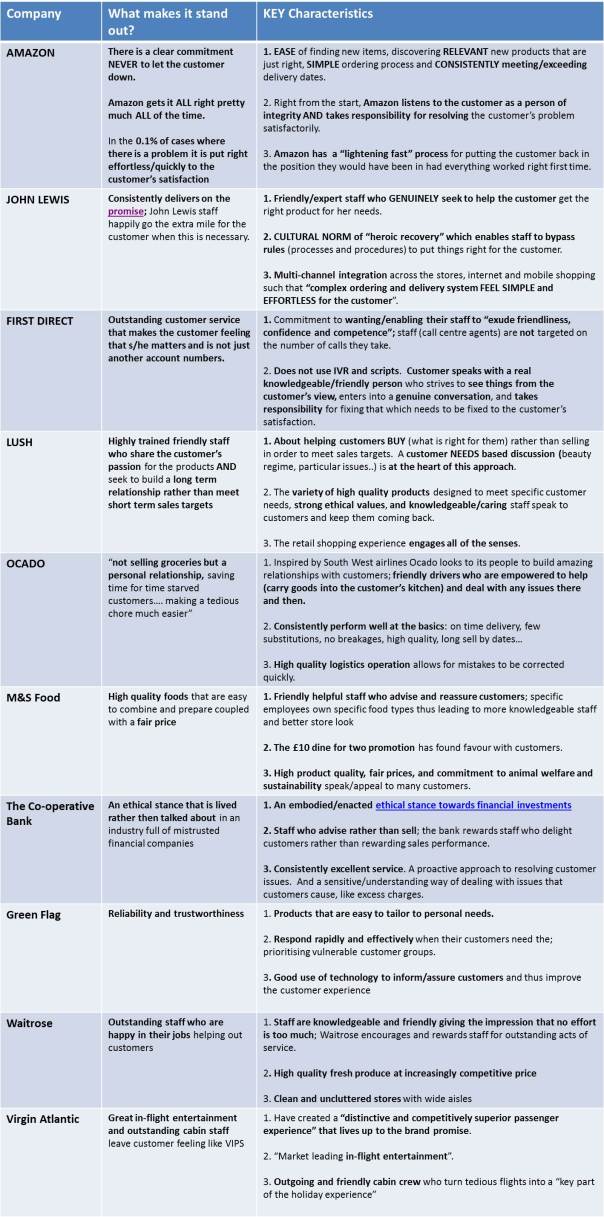Why have I been making such a big fuss of leadership, management and employee engagement?
Some of you – especially those of you that focus on strategy, process or technology – might have noticed that I have increasingly made a big thing of leadership, management, employee engagement and organisational effectiveness. Why?
This is the third year of the Nunwood Customer Experience Excellence Index in the UK and here is what the 2012 report says:
“For many of the Top 10 it is their focus on employee engagement, training, development and motivation even for seemingly mundane jobs that differentiates the service experience.”
“There is generally a movement to empower front line staff to step outside procedure and make sensible decisions in favour of the customer.”
“The role of the retail in-store employee is moving from transactional to information, education and building a relationship.”
What else does the Nunwood CX 2012 report tell us?
Aside from the critical importance of employees and employee engagement engendered through the right leadership and management practices, the following four points caught my attention:
1. In a price dominated shopping context, many companies are looking to non price based factors to compete;
2. Companies have focussed on making it easier for customers to do business with them by “removing time and effort from business processes as firms seek to get the basics right”;
3. Increasingly attention is shifting to the human/emotional factors that “make a deeper connection with consumers”; and
4. “The leaders achieve consistently excellent delivery of the basics but also deal with the unusual – unusually well.”
Who are Nunwood’s UK Customer Experience Excellence leaders?
Amazon stays in top place followed by John Lewis (multichannel retailer) and First Direct (non branch bank). Green Flag (car breakdown service) and The Co-operative Bank are the two brands making the biggest improvement since 2011. Here are the Top 10:
What can we learn from these CX leaders?
I have gone through the Nunwood report to figure out what made each of these companies/brands stand out. And to list the key characteristics that contribute to them being CX leaders. Here is the table – please click on it to see it more clearly:
 And finally
And finally
In the top 10 there is only one company/brand where marketing as in ‘promotion’ (which sadly is what marketing has become in too many organisations) has contributed significantly to the customer’s experience. And as such is mentioned by the Nunwood report. If you read the table above you will find that it is the the £10 dine for two promotion from M&S Food that spoke to / found favour with customers.
Have you noticed something deeply significant? These companies are actually operating from a powerful context (‘do right by the customer’) and thus putting in place the people, the cultural norms, the processes, the metrics and the technology that enables them to do ‘right by the customer’. I am clear that requires leadership from the top (walking the talk). And the right management practices: recruiting the right people; encouraging them to delight customers by rewarding them for building relationships/delighting customers; listening to customers as people of integrity; allowing employees the space to bypass policies, processes and procedures when it is necessary to do so; encouraging employees to own the resolution of customer problems; and putting in place the process and technology that enables customer facing people to quickly/easily deal with and resolve stuff that matters to customers.
If you still don’t get it then I will spell it out. I say a genuine commitment to service in the broadest sense of service is what drives customer experience excellence and generates customer advocacy/loyalty. And marketing can contribute provided marketing shifts its focus from ‘spin’ to genuine service to customers through information, education and seduction – seduction that is based on the ability of the organisation to deliver the promise that is used to seduce the customer. If this speaks to you then I recommend that you read a post I wrote a little time ago: Transforming Service through the radical reconceptualisation of Service




